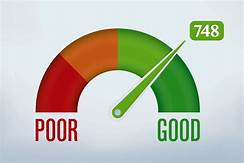OTHER NEWS
The Learning Center
Our Learning Center ensures that every reader has a resource that helps them establish and maintain a competitive advantage, or leadership position. For instance, loan originators and brokers will have one-click access to resources that will help them increase their productivity. Search topics by category and keyword and generate free videos, webinars, white papers and other resources. If you would like to add your content to the learning center, please click here or email Tim Murphy at [email protected].
Social Media Will Disappoint, Notes Survey
- Monday, 05 November 2018
- Originating

Lenders and mortgage brokers that have invested in social media for marketing and communications will generate disappointing results.
That’s because borrowers are more likely to respond to traditional forms of marketing and communication than to a Twitter advertisement, a Facebook post or another form of social media, according to Borrower Preferences and Mortgage Originations, a survey from SecondaryWire, the wholesale mortgage exchange, located in San Francisco. Survey respondents are mortgage purchasers and represent a cross section of mortgage borrowers.
“The results of our survey showed social media was neither significant as a communication channel nor did it impact the decision of where to go for a loan in any significant kind of way,” said Larry Mullen, senior vice president and founder of SecondaryWire. “Social media was preferred by just six percent of respondents, so it isn’t important to borrowers—and won’t factor into their decisions on purchasing a home loan.”
One point the data drives home. Borrowers selected the lender or mortgage broker for the same reasons they had done so for years, as follows:
Among the top reasons for selecting a lender/broker were the following: The lender with the lowest rate, 47 percent; able to meet my terms, 32 percent; reputation of company, 31 percent; existing banking relationship, 31 percent; had the best mortgage products, 30 percent.
A referral from someone I knew, was sixth, 28%. For a transaction that’s as important as purchasing a mortgage, it’s a bit of a surprise that the choice—of a referral--failed to rank among the top-three. Still, it did better than the social media options—which were at the bottom among all choices.
Only 13 percent of respondents thought an online loan application was important. Virtually no one considered it important that the lender/broker had a mobile app, 6%. And a referral on social media was virtually worthless, with 1% responding that it was the reason for their selection of the originator.
What were your most important reasons for selecting the lender/broker who processed your loan? (Respondents could select more than one answer.)
| Reason | % |
| Had the lowest rates |
47% |
| Able to meet my terms | 32% |
| Reputation of company | 31% |
| Existing banking relationship | 31% |
| Had the best mortgage products | 30% |
| Referral from someone I know | 28% |
| Had an office in my area | 27% |
| Past experience with the mortgage company | 21% |
| Had an online application process | 13% |
| Past experience with the individual broker | 11% |
| Had a mobile app | 6% |
| Referral on social media | 1% |
To devotees of social media, it might come as a surprise that 64 percent of respondents preferred to communicate with their originator with their phone, 39 percent; or in person, 25 percent. The responses haven’t changed very much from what answers would have been five, 10 or even 15 years ago. Fully 29% preferred to use email to communicate, despite security risks and exposing their personal confidential data to cyber-thieves. As for social media, six percent said they preferred to use social media to communicate. Just one percent preferred to use video chat and online meeting platforms.
Read more...
Buying a Mortgage Causes Credit Scores to Dip
- Friday, 02 November 2018
- Originating

In the aftermath of a mortgage closing, credit scores decline 15 points, though they do recover with time. The drop occurs because after a consumer takes out a mortgage, a large balance is added to his credit report, according to a survey from Lending Tree.
Credit scoring models consider a consumer’s total balance of money owed, and a large increase in outstanding debt drives scores lower. Also, the creation of a new credit line item also weighs on the score, though to a lower extent.
To be sure, a mortgage also increases the diversity of accounts in the credit file, which also boosts the score. As time passes, making on-time payments helps a borrower improve their credit score as they demonstrate they are managing their new mortgage account well. Eventually, the score returns to its pre-mortgage level, and often, surpasses it.
"A house is the biggest purchase most people make in their lifetime, with the accompanying mortgage being their largest financial transaction," said Tendayi Kapfidze, chief economist at LendingTree that. "Most people know they should work toward having the best possible credit score before applying for a mortgage, as an applicant's credit score can significantly affect the amount and cost of borrowing. But what happens to your credit score after you get a mortgage?" wasn’t necessarily clear.
Among the key findings of the report are the following:
- Scores fall for at least four months.On average, credit scores fell by 15 points and took 160 days, or just over five months, to reach their low points. Mortgages do not appear on credit reports immediately after closing. Typically, the mortgage lender starts reporting to the credit bureaus after the first payment and depending on the lender's reporting cycle, so it may take about 60 days after closing or even longer for it show up and start affecting a score. New Orleans homeowners saw their credit scores reach their lowest points in an average time of 133 days, while Milwaukee homebuyers' scores had the longest decline: 191 days.
- Recovery takes at least another five months.It took an average of an additional 161 days for scores to return to their prior levels. As borrowers make on-time payments, their credit scores start to recover. In Richmond, Va., homebuyers' credit scores rebounded fastest at 130 days, while the upward climb for homeowners in Austin, Texas, lasted 197 days.
- Eleven months later, scores recover and are poised to move higher.The average for the complete decline and recovery cycle was 11 months nationally. Richmond homebuyers saw their credit scores go through the cycle the fastest, nine months, while the dip and return of Milwaukee homebuyers' scores took the longest, 13 months.
- Tight range of score declines.The average score fell the most in Virginia Beach, Va., down 20 points, and the least in Minneapolis at just 11 points. Individual credit scores in the sample declined as much as 40 points.
Downpayment Affordability Flat in Q3
- Monday, 29 October 2018
- Originating

A survey of down payment affordability, by state, showed that average down payment as a percentage of the purchase priced didn’t change in the third quarter.
"The average down payment on a U.S. home fell in the third quarter, though down payments as a percentage of purchase price remained about the same," said Tendayi Kapfidze, chief economist at LendingTree, and the firm that produced the survey. "We compare the average down payment percentages and amounts for conventional 30-year, fixed-rate purchase mortgage offers across the country.”
Average down payment percentages for conventional 30-year, fixed-rate purchase mortgage offers stayed about the same from the second quarter to the third quarter, rising 0.03 percentage points (18.02 percent to 18.05 percent). At the same time, average down payment amounts decreased nearly 10 percent in the third quarter, falling from $52,480 to $47,265. The average loan amount offered to potential homebuyers fell around $28,000 from $285,903 in Q2 to $257,749 in Q3.
Kapfidze breaks down how these findings impact those looking to buy a home, sell the one they're currently in or stay where they are:
Homebuyers
The data shows, the average down payment for a home is decreasing and loan amounts fell as well, which means homebuyers because they will need to save less money for the down payment. For borrowers that the down payment was a stumbling block, now might be an ideal time to review options.
Home Sellers
Recent data shows that home prices are not increasing as fast as they have been over the past few years. As a result, now is a good time to sell, because waiting, if the trend continues, could cost the homeowner money.
Staying in the Home
If home prices begin to fall, then homeowners might want to reconsider refinancing or taking out a home equity loan. Or if they plan on using their home as a retirement asset, then knowing its value helps make planning more accurate.
The lowest average down payments, by percentage
Alaska
Average down payment percentage: 15.41%
Average offered down payment: $36,476
Average offered loan amount: $236,643
West Virginia
Average down payment percentage: 15.44%
Average offered down payment: $21,415
Average offered loan amount: $138,696
Mississippi
Average down payment percentage: 15.78%
Average offered down payment: $22,964
Average offered loan amount: $145,523
The lowest average down payments, by amount
West Virginia
Average down payment percentage: 15.44%
Average offered down payment: $21,415
Average offered loan amount: $138,696
Arkansas
Average down payment percentage: 15.90%
Average offered down payment: $21,707
Average offered loan amount: $136,505
South Dakota
Average down payment percentage: 18.38%
Average offered down payment: $22,149
Average offered loan amount: $120,529
The highest average down payments, by percentage
California
Average down payment percentage: 21.44%
Average offered down payment: $97,809
Average offered loan amount: $454,146
Hawaii
Average down payment percentage: 21.32%
Average offered down payment: $69,923
Average offered loan amount: $328,046
Delaware
Average down payment percentage: 21.29%
Average offered down payment: $51,678
Average offered loan amount: $242,735
The highest average down payments, by amount
California:
Average down payment percentage: 22.44%
Average offered down payment: $97,809
Average offered loan amount: $456,146
Washington, D.C.
Average down payment percentage: 19.84%
Average offered down payment: $91,397
Average offered loan amount: $460,685
New York
Average down payment percentage: 19.85%
Average offered down payment: $90,318
Average offered loan amount: $454,968
Ellie's Revenues Rise 15%
- Thursday, 25 October 2018
- Originating

Ellie Mae reported that revenues in the third quarter were $123 million, up from $107 million in 2017.
“We grew revenue by 15% and increased revenue per loan 14% year-over-year,” said Jonathan Corr, president and CEO. Also, loan volume on the platform increased year-over-year despite industry mortgage volumes being down 9% on an absolute dollar basis and down around 13% on a unit basis.
Revenues for the third quarter of 2018 were $123 million, compared to $107 million for the third quarter of 2017. Net income for the third quarter of 2018 was $12.4 million, or $0.35 per diluted share, compared to $14.5 million, or $0.41 per diluted share, for the third quarter of 2017. Net income for the third quarter of 2018 includes the amortization of acquisition-related intangibles related to the Velocify acquisition.
On a non-GAAP basis, adjusted net income for the third quarter of 2018 was $24.2 million, or $0.67 per diluted share, compared to $19.9 million, or $0.56 per diluted share, for the third quarter of 2017. Adjusted EBITDA for the third quarter of 2018 was $40.9 million, compared to $38.7 million for the third quarter of 2017.
For the fourth quarter of 2018, revenues are expected to be in the range of $113 million to $116 million. Net income is expected to be in the range of $0.0 to $2 million, or $0.0 to $0.06 per diluted share.
On a non-GAAP basis, adjusted net income is expected to be in the range of $12.4 million to $14.2 million, or $0.34 to $0.39 per diluted share. Adjusted EBITDA is expected to be in the range of $28.8 million to $31.3 million.
“Rising rates, low housing inventory, and overall home affordability are serving as significant headwinds to the overall mortgage market. While we believe these headwinds are temporary, they are prompting us to reset our assumptions for the year,” said Corr.
For the full year 2018, revenues are now expected to be in the range of $477 million to $480 million, a decrease from the prior range of $495 million to $505 million.
Contracted revenues are now expected to be in the range of $347 million to $349 million, a decrease from the prior range of $353 million to $358. Net income is expected to be in the range of $22 million to $24 million, or $0.61 to $0.67 per diluted share, for a range of $19 million to 23 million, or $0.53 to $0.64 per diluted share previously provided.
On a non-GAAP basis, adjusted net income is expected to be in the range of $65.8 million to $67.6 million, or $1.84 to $1.88 per diluted share, a decrease from the range of $64.5 million to $69.5 million, or $1.79 to $1.92 per diluted share previously provided. Adjusted EBITDA is expected to be in the range of $125.3 million to $127.8 million, a decrease from the range of $129.5 million to $134.5 million previously provided.
“In the third quarter, we announced a new major release of Encompass and made continued progress on the rollout of our Encompass Connect solutions,” said Corr. “Over the long-term, we expect the mortgage industry to trend to a sustained purchase driven market and we believe we are well positioned to drive further market share gains and technology adoption across our large customer base."
Read more...
